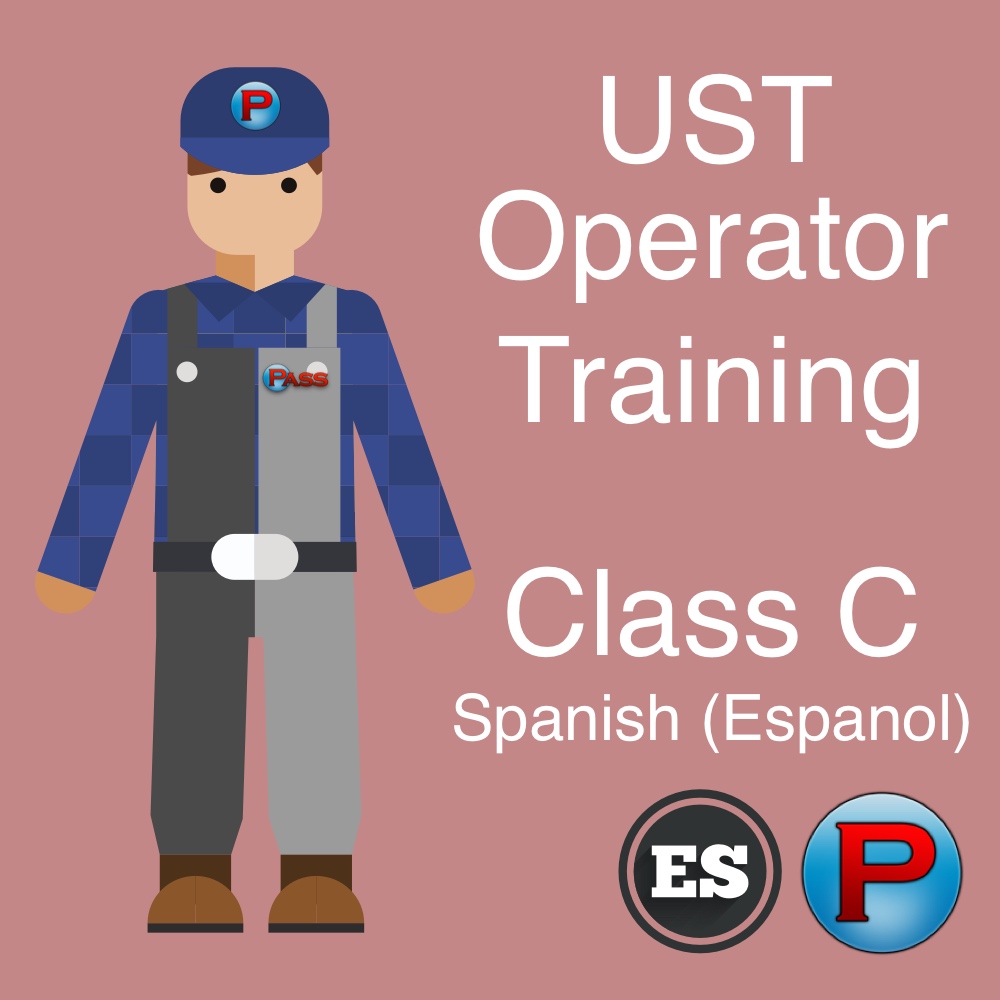The PASS Training Marketplace
New Mexico UST Class C Operator Training | SPANISH
New Mexico UST Class C Operator Training | SPANISH
All of PASS’ UST operator training courses meet and exceed the federal requirements for UST operator training and are offered through our in-house designed and built Learning Management System (LMS). Our courses are available on demand, 24/7and are accessible from any internet-connected computer, tablet, or phone. The student can complete an entire course in a single session or take the course in segments. The training may be stopped and restarted, allowing for maximum schedule flexibility. PASS also does not impose time restrictions on course access, so students may take as much time as they need to complete their training. PASS’ training courses are accepted by more states than any other training provider.
The PASS UST Class C training course consists of eight primary chapters. Each chapter is followed by a short quiz. Once a student has completed all chapters and quizzes (approximately 30 minutes), he or she will be directed to print out an Orientation Checklist. During the student’s orientation tour of the facility, the student and the manager or Class B Operator will check off each item on the list as it is identified and explained. When the Orientation Checklist has been completed, the student may print his or her UST Class C operator certificate.
The PASS UST Class C training course consists of eight primary chapters. Each chapter is followed by a short quiz. Once a student has completed all chapters and quizzes (approximately 30 minutes), he or she will be directed to print out an Orientation Checklist. During the student’s orientation tour of the facility, the student and the manager or Class B Operator will check off each item on the list as it is identified and explained. When the Orientation Checklist has been completed, the student may print his or her UST Class C operator certificate.
- Final Exam
- No
- Certificate
- Yes
- Average Rating
- / 0 Reviews
- Regulated By
- New Mexico Environment Department - Petroleum Storage Tank Bureau →
Revisión General de las Instalaciones Chapter 1
This chapter provides a basic overview of the primary components of a typical UST facility. These components include the USTs, manways, spill buckets, fuel dispensers, and dispenser nozzles.
Monitoreo Chapter 2
This chapter emphasizes the components used to monitor a UST facility. Students will learn what an Automatic Tank Gauge (ATG) is and does, how to interpret its alarms and warnings, and what to do in case of an alarm. The role of line leak detectors is also discussed.
Protección del Medio Ambiente Chapter 3
In this chapter, students learn about sensitive receptors, or places where a fuel spill may leave the facility and enter the environment. The chapter also introduces students to the spill kit and its contents, and how to use spill kit components to contain spills threatening sensitive receptors like curb breaks and drains.
Reglas para cargar combustible Chapter 4
The focus of this chapter is fuel delivery safety. Students will watch a short video on proper fueling procedures. Students also learn about hazards at the fueling point, including smoking, static electricity, leaving a vehicle unattended while fueling, and leaving a vehicle running while fueling.
Pasos de Entrega de Combustible Chapter 5
This chapter teaches the student how to supervise a fuel delivery and monitor for problems during a fuel delivery. Additional emphasis is placed on the ATG and on overfill prevention devices like overfill prevention valves and ball float valves. Delivery prohibitions are also addressed.
Seguridad Chapter 6
This chapter covers safety information every Class C Operator needs to respond to emergencies. Included here is a video explaining when and how to use a fire extinguisher. The Emergency Stop and All Stop buttons are identified and discussed.
Situaciones de emergencia Chapter 7
This chapter discusses common emergency situations and proper responses to them, including what to do if a vehicle leaves the facility with the nozzle still in the vehicle’s fuel spout. Managing customer traffic in the event of a spill is also covered. Correct fire extinguisher operation is reviewed.
Lista de Orientación Chapter 8
This chapter covers how to print your Orientation Checklist and complete your training.



